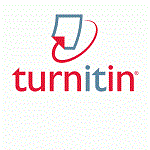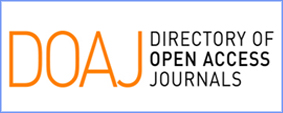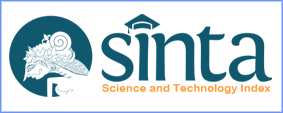The Effect of Contextual Worksheets Assisted MEA Learning on Critical and Creative Thinking Ability
Abstract
Keywords
Full Text:
PDFReferences
Aljaberi, N. M., & Gheith, E. (2015). University Students Level of Metacognitive Thinking and their Ability to Solve Problems. American International Journal of Contemporary Research, 5(3), 121-134.
Boero, P., & Dapueto, C. (2007). Problem Solving in mathematics education in Italy: Dreams and reality. ZDM: the international journal on mathematics education, 39(5), 383-393.
Candiasa, I. M. (2010). Statistik Univariat dan Bivariat disertai Aplikasi SPSS. Singaraja: Penerbit Undiksha.
Chamberlin, S. A., & Moon, S. M. (2008, November 24). How does the Problem Based Learning Approach Compare to the Model Eliciting Activity Approach in Mathematics? Retrieved July 1, 2019, from http://www.cimt.org.uk/journal/index.htm: http://www.cimt.org.uk/journal/chamberlin.pdf
Costa, A., & Kallick, B. (2008). Describing 16 Habits of Mind. Retrieved June 10, 2019, from http://www.habits-of-minds.net/16HOM2.pdf
Darmojo, H., & Kaligis, J. R. (1992). Pendidikan IPA II. Jakarta: Depdikbud, Dirjen Dikti Proyek Pembinaan Tenaga Kependidikan.
Daryanto, .. (2009). Panduan Proses Pembelajaran Kreatif dan Inovatif. AV. Publisher, Jakarta.
Djamarah, S., & Zain, A. (2000). Strategi Belajar Mengajar. Jakarta: Rineka Cipta.
Eggen, P., Wahono, S., & Kauchak, D. (2012). Strategi dan Model Pembelajaran: Mengajarkan Konten dan Keterampilan Berpikir. Jakarta: PT Indeks.
Hanifah. (2015). Penerapan Pembelajaran Model Eliciting Activities (MEA) dengan Pendekatan Saintifik untuk Meningkatkan Kemampuan Representasi Matematis Siswa. KreanoJurnal Matematika Kreatif-Inovatif, 6(2), 191-198.
Liberna, H. (2012). Peningkatan Kemampuan Berpikir Kritis Matematis Siswa Melalui Penggunaan Metode Improve Pada Materi Sistem Persamaan Linear Dua Variabel. FORMATIF: Jurnal Ilmiah Pendidikan MIPA, 2(3), 190-197.
Mahmuzah, R. (2015). Peningkatan Kemampuan Berpikir Kritis Matematis Siswa SMP melalui Pendekatan Problem Posing” Jurnal Peluang. Jurnal Peluang, 4(1), 64-72.
OECD. (2018). Programme For International Student Assessment(PISA) result From PISA 2018. https://www.oecd.org/pisa/PISA-2018-Indonesia.pdf.
Permana, Y. (2010). Pengembangan Kemampuan Pemahaman, Komunikasi, dan Disposisi Matematis Siswa Sekolah Menengah Atas Melalui Model Eliciting Activities. Bandung: Disertasi pada SPS UPI Bandung.
Rina, D. S., Rizky, E. U., & Nurfitriana, R. (2017). Keefektifan model eliciting activities (meas) Berbantu macromedia flash terhadap kemampuan Pemecahan masalah. Jurnal Ilmiah Pendidikan Matematika, 2(2), 170-175.
Ruseffendi, E. T. (1991). Pengantar Matematika Modern dan Masa Kini untuk Guru dan PGSD D2 Seri Kelima . Bandung: Tarito.
Sanjaya, W. (2013). Penelitian Pendidikan Jenis, Metode dan Prosedur. Jakarta: Kencana Predana Media Group.
Santrock, J. W. (2011 ). Perkembangan Anak Edisi 7 Jilid 2. (Terjemahan: Sarah Genis B). Jakarta: Erlangga.
Shoidah, Z., Rachmadiarti, F., & Winarsih. (2012). Pengembangan LKS Berbasis Contextual Teaching and Learning Materi Hama dan Penyakit Tumbuhan. Berkala Ilmiah Pendidikan Biologi (BioEdu), 1(3), 8-12.
Sudjana, N. (2009). Penilaian Hasil Proses Belajar Mengajar. Bandung: Remaja Rosdakarya.
Trianto. (2009). Mendesain Model Pembelajaran Inovatif-Progresif. Jakarta: Kencana Predana Media Group.
Wardhani, S., Wiworo, Guntoro, S. T., & Sasongko, H. W. (2010). Pembelajaran Kemampuan Pemecahan Masalah matematika di SMP. PPPPTK Matematika. Yogyakarta: PPPPTK Matematika, Dirjen PMPTK Kemdiknas.
Yeni, R. (2010). Strategi Pengembangan Kreativitas pada Anak Usia Taman Kanak-kanak. Jakarta: Kencana.
Yunianta, T., Rusilowati, A., & Rohmad. (2012). Kemampuan Berpikir Kreatif Siswa Pada Implementasi Project Based Learning Dengan Peer And Self-Assessment. Unnes Journal of Mathematics Education Research, 1(2), 81-86.
Article Metrics
Abstract has been read : 700 timesPDF file viewed/downloaded: 0 times
DOI: http://doi.org/10.25273/jipm.v9i1.7405
Refbacks
- There are currently no refbacks.
Copyright (c) 2020 JIPM (Jurnal Ilmiah Pendidikan Matematika)

This work is licensed under a Creative Commons Attribution-ShareAlike 4.0 International License.
View JIPM Stats
JIPM indexed by:
Copyright of JIPM (Jurnal Ilmiah Pendidikan Matematika) ISSN 2502-1745 (Online) and ISSN 2301-7929 (Print)













